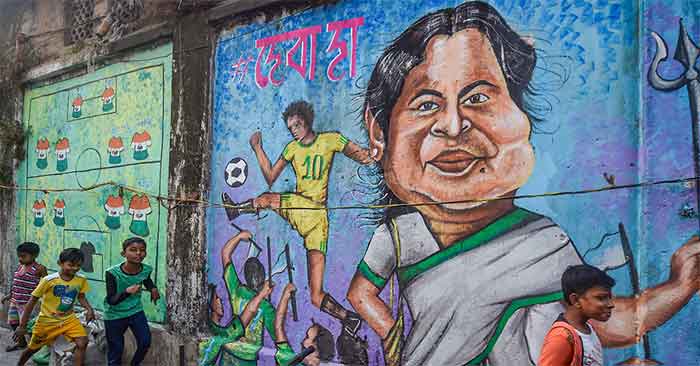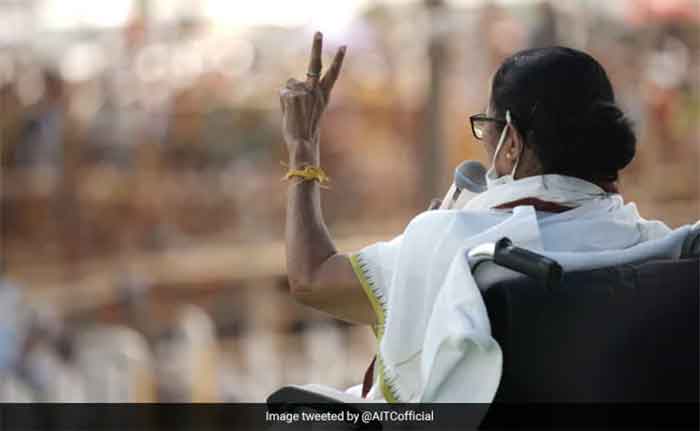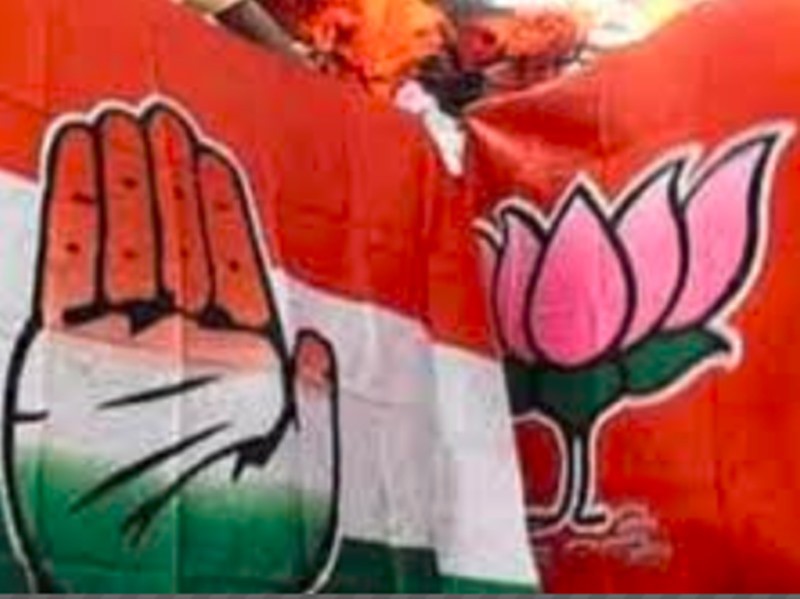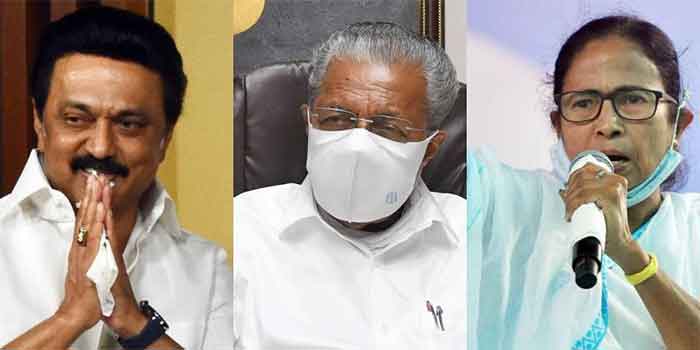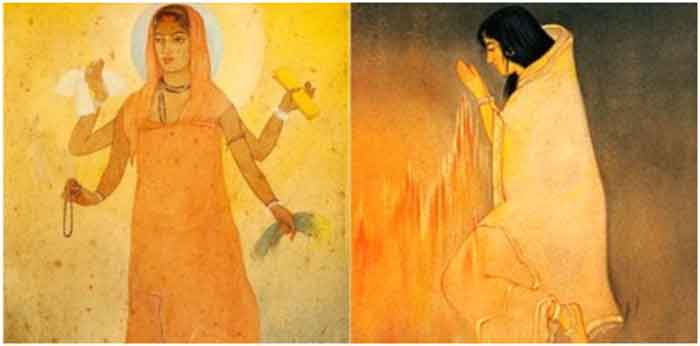
Art from the Bengal School by Abanindranath Tagore and Nandalal Bose
(This is an exclusive long-form essay that aims to provide the most comprehensive and incisive understanding of West Bengal Assembly Election 2021: the ground-shifting and momentous battle in post-Independence Bengal. The first part can be read here. This is the second part)
Bengaltattva and Hindutva
Bengaltattva – with its eight aspects – isn’t exclusively linked to the ethno-linguistic category of Bengalis. It is not Bengalitattva / Bangalitattoh.
Bengaltattva / Banglatattoh also includes those – who are not Bengalis – but have been influenced by the one-or-more aspects of Bengaltattva, by the virtue of being born in Bengal, or being residents of the state, for a certain period of time. Hence, they know the language, the culture, the idiosyncrasies and the nuances.
Bengalis – the third largest ethnic group in the world with 264 million people – have four primary religious sub-groups: Bengali Muslims (68%), Bengali Hindus (31.9%), 2 million Bengali Buddhists and 1.4 million Bengali Christians.
Most of the Bengali Muslims – 151 million – live in Bangladesh (formerly Eastern Bengal of Undivided India, and then East Pakistan). The muktijuddho or the Bangladesh Liberation War of 1971 – supported and facilitated by India – was based upon self-determination movement, and heart-felt resolve to preserve Bengali language and Bengali culture.
Bangladesh’s present population of 165 million – including 14 million Hindus – is all speakers of Bengali. Only a negligible percentage of people are the speakers of Urdu.
Similarly in West Bengal, India, the largest constituency or category is not defined by religion, but by language.
86.22% – of the population of 91 million – is the speakers of Bengali language, as a mother tongue.
70.5% are Hindus, including Bengali Hindus (59%). 27% are Muslims, who are overwhelmingly Bengali Muslims (25%); only 2% are Urdu-speaking Muslims, who live mostly in Kolkata and the surroundings.
So the Bengali language and the Bengaltattva with its eight aspects are the primary adhesives which hold West Bengal together, than religion.
*
Hindutva as a term (Hindu + tattva) first appeared in a book published in Kolkata in 1892, and the coinage is attributed to the author, Chandra Nath Basu (1844-1910).
Basu was born in Koikala village in Hooghly. He pursued B.A. from Presidency College in Kolkata, completed a M.A. in history and also earned a degree in law in 1867. He did a short stint as the Deputy Magistrate of Dacca, and permanently settled in Kolkata where he worked as a librarian, translator, principal of a college, educator and an author, who started to write initially, in English.
Bankim Chandra Chattopadhyay (1838-1894) – who wrote a slim incomplete novel in English titled Rajmohan’s Wife (1864), now regarded as the first Indian novel written in English – spotted Basu’s talent. But Bankim prodded Basu to drop English, and start to write in Bengali.
An orthodox Brahmin pandit Sasadhar Tarkachuramani – whom Basu met at Bankim’s residence – nurtured his faith in religion, and Basu began to propagate ultra-conservative values, which made him immensely popular in the orthodox sections of the society.
One of Basu’s earliest works in Bengali was Shakuntala Tattwa where he compared Shakuntala with Shakespeare’s Juliet, prized female chastity, condemned pre-marital romance and lambasted European gender relations.
Cheered on by the rigid conservatives of Hindu society, Basu embarked upon his magnum opus and published Hindutva with a subtitle of Hindur Prakita Itihas / Authentic History of Hindus.
In this sizeable work, Basu’s foundation was his understanding of Advaita Vedanta, but he went on to portray Hindus to be fundamentally superior to all the peoples of other faiths (which Advaita of Adi Shankaracharya didn’t propagate).
In his jest to prove Hindu philosophy, social customs, vegetarian diet and cultural practices to be superior to western culture, he propounded an idea of ‘Hindu Supremacism’ that continues to be reflected in the current Brahmanical right wing ideologies of India.
Basu uncharacteristically imbibed unorthodox Tantra, within his orthodox Hindutva, as a method to boost vigor and manliness, which would help in the struggle against the imperial colonists.
He also supported the caste system, placed Indian Hindus as true Aryans, advocated for child marriage, insisted that India shouldn’t be a homeland for foreign religions, approved restriction on female education, favored curtailment of civil rights of women and wanted to preserve and promote Hindu patriarchal hegemony and aggressive chauvinism.
The staunch Hindutva thesis of Basu was such a glaring misfit within the zeitgeist of Bengal Renaissance that the work didn’t find any traction beyond the circle of Hindu orthodoxy. Even Bankim Chandra Chattopadhyay chose to disassociate himself from Basu, whose social behavior increasingly became more odd and peculiar. He continued to publish more works, and died in 1910.
Chandra Nath Basu – in spite of his regressive conservatism – was an anti-colonialist; he also propagated the need for economic nationalism. Basu’s Hindutva was a ‘cultural thesis of the orthodox view’. But it wasn’t the ‘political ideology of militant nationalism’ – inspired from Europe – that sought political power by utilizing the Hindu identity, that was ideated by V.D. Savarkar in his ‘The Essentials of Hindutva’ published in 1923, that inspired Dr K.B. Hedgewar to quit the Congress, and become the founding Sarsanghachalak (or ‘Chief’) of the Rashtriya Swayamsevak Sangh (RSS) in 1925, with a goal of establishing a Hindu Rashtra, or rather, a Hindutva Rashtra.
It is not clearly known how Savarkar – a Chitpawan Brahmin from Nashik – got to know about the term Hindutva, coined by Basu, in an obscure Bengali book published in Kolkata.
But Savarkar was incarcerated in the Cellular Jail, in the Andaman and Nicobar islands in 1910 for nearly a decade, from where he wrote his infamous mercy petitions / apology letters to the colonial British rulers, and pledged his ‘loyalty to the English government’.
The Cellular Jail – described by Savarkar as ‘jaws of death’ – was full of Bengali revolutionaries and freedom fighters; he might have heard of the Hindutva term from any one of them. He could have also met someone who had read Basu’s book, and knew about the contents.
‘Doctorji’ Hedgewar was sent to Kolkata in 1910 by Balkrishna Shivram Moonje, a close friend of Savarkar, to pursue medical studies and to gather tactics and knowledge from underground revolutionary organizations like Anushilan Samiti and Jugantar. Hedgewar – during his stay of 5 years – also took inspiration from the ‘Hindu revival’ in Bengal.
But the ‘Hindu revival’ in Bengal was taking place in the terms of precepts from Hinduism / Indian philosophy, at a time of British colonialism, when native culture was being placed as inferior to the western one. It was a reaction to ‘impositions’ and ‘social engineering’ by a foreign culture when the educated natives started to look back to their own roots to stand-up in defiance against imperialism with a sense of history, civilization and honor.
So a variety of revivalist ideas – from Ram Mohan’s Brahmo Samaj to Aurobindo’s Integral / Supramental Yoga – surfaced during that time when Renaissance blended with Indian Freedom Movement.
Swami Vivekananda – who wished to find a way between ‘old superstitious orthodoxy’ and ‘soulless materialism’ – also acknowledged the revival of Hinduism in Bengal during that era of late 19th century, but warned by pointing out: ‘There is danger ahead as well as glory; for revival sometimes breeds fanaticism and sometimes goes to the extreme so that often it is not even in the power of those who start the revival to control it. It is better to be forewarned.’
*
Arguably, there is no other Indian novel that did so much for the cause of the Indian Freedom Movement than Bankim Chandra Chattopadhay’s Ananda Math (1882).
The plot of the novel is simultaneously set during the great famine in Bengal in 1770 and the Sannyasi Rebellion (1760-1800) against the British East India Company and its oppressive administration.
Here are some powerful quotes from Bankim’s Ananda Math:
“Mother,’ said the Mahatma, ‘this is the temple, the mosque, the vihara and the gurdwara of Mother India. Cast aside all fears from your heart.”
“Thousands of men, women and children might die of starvation; yet there must be no cessation in the collection of taxes.”
“This is our Motherland. We are the children of this soil. You have no more moral or legal right to rule over this country than we have to rule over your England.”
“In our work, we do not differentiate between Hindu or Muslim, Buddhist or Sikh, Parsee or Pariah. We are all brothers here – all Children of the same Mother India.”
Bankim wrote the poem ‘Bande Mataram’ in the 1870s while thinking of Bengal. It was a work of Bengali nationalism that finally appeared in Ananda Math in 1882.
Aurobindo referred it as ‘National Anthem of Bengal’. The poem was first sung by Rabindranath Tagore whose songs / poems are used as the national anthems of 3 countries: India, Bangladesh and Sri Lanka; a unique distinction – rarest of the rare – that no one else has earned.
Tagore sung ‘Bande Mataram’ in 1896 at a session of Indian National Congress (INC), and the first two verses of the song were adopted as the National Song of India in 1937 by the INC.
The colonial British government banned the song and the novel, but the people defied the ban by singing it, even though many were imprisoned for doing so. The song became the marching song of the Indian Freedom Movement where the RSS and the Hindu Mahasabha had no supporting role.
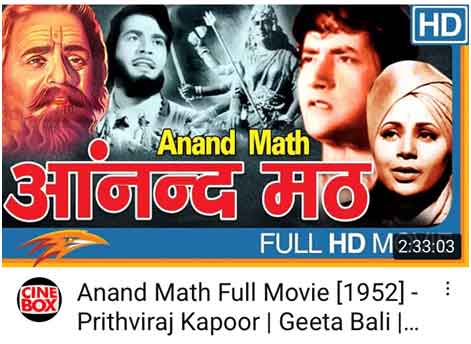
(Anand Math made in Hindi in 1952 features the stirring Vande Mataram sung by Lata Mangeshkar and Hemant Kumar. The song / movie can be watched on YouTube)
Similar to Bankim’s ‘Bande Mataram’ poem to Bengal, Abanindranath Tagore (1871-1951) painted an image of Bongo Mata (Mother Bengal) as a peaceful saffron clad goddess, dressed as a sadhvi, with four hands holding sheaves of paddy, a book, a white cloth and a japa mala / prayer beads.
The image later became the Bharat Mata, personified in a map of India, and also entered the Indian Freedom Movement.
At a time, when ‘Vande Mataram’ and ‘Bharat Mata’ have been zealously appropriated by the political right wing, we must recall that both the song and the water-color painting are linked to Bengali nationalism and Bengal, where the right wing never had an elected government, and to the Indian Freedom Movement, where the right wing was conspicuously absent.
*
Shyama Prasad Mukherjee (1901-53) was the son of famous Bengali educator, jurist, barrister and mathematician Ashutosh Mukherjee who was the second Vice-Chancellor of the Calcutta University.
Shyama Prasad was also a barrister and a politician. He was a member of the Akhil Bharatiya Hindu Mahasabha from 1943 to 1946. Prime Minister Jawarharlal Nehru inducted Mukherjee into the interim central government as a Minister on 15 August 1947. He had differences with the Hindu Mahasabha after the assassination of M.K. Gandhi, and actually quit the organization after his suggestion to allow non-Hindus to become members of Hindu Mahasabha was turned down.
Mukherjee resigned from the Nehru cabinet over disagreement about the 1950 Delhi Pact. Then, with the help of the RSS, Mukherjee founded the Bharatiya Jana Sangh, the predecessor to the Bharatiya Janata Party (BJP), in 1951. But he prematurely died in 1953.
Mukherjee was a learned person, that Nehru also acknowledged, and a ‘Bharitiya Culture’ revivalist. But he wasn’t fanatical far-right as Hindu Mahasabha – where Savarkar was the president from 1937 to 1943 – that became an extremist organization: blamed by Sardar Patel for creating the atmosphere that led to Gandhi’s assassination and thoroughly despised by the likes of Subhas Chandra Bose who passionately condemned the exploitation of religion in politics.
(Sardar Patel also banned the RSS – that was being headed by M.S Golwalkar from 1940 to 1973 – ‘to root out the forces of hate and violence that are at work in the country and imperil the freedom of the Nation and darken her fair name’. But later, the Government of India issued a statement in 1949 that said that the ban has been lifted after the RSS gave an undertaking to be loyal to the Constitution of India and accept the National Flag of India, that they had earlier opposed. But RSS still didn’t hoist the Indian Tricolor from 1950 till 2002)
So these were the essential truths of Bengal’s historical links with the four facets of right wing ideology of the Sangh Parivar: ‘Hindutva’, ‘Vande Mataram’, ‘Bharat Mata’ and ‘S.P. Mukherjee’.
From the brief story, we can quickly understand, that the recent pronounced effort – via books, articles, media, Facebook and WhatsApp – to place Bengal as a historic place of ‘Hindu Nationalism’, domain of ‘Bhadralok Sena’ and the root of ‘Saffron Ideology’ – in the manner of BJP-RSS’s interpretation with a pronounced anti-Muslim stance – has no real truth, or any substance.
It is just another organized effort – at the time of Bengal Assembly Election – to re-write history and spin convoluted narratives to suggest that Bengal shaped Hindutva, when Bengal had nothing to do with ‘getting inspired by Italian fascism’, ‘idealizing German Nazism’ and ‘collaborating with Israeli Zionists’.
Bengal never supported Savarkar’s Hindutva slogan to ‘hinduize all politics’ and ‘militarize Hindudom’.
The chief Marathi Brahmin ideologues of Hindutva – Savarkar and Golwalkar – also seemed to be have channelized – through their militant political theocratic nationalism – the unconscious desire to re-establish the Hindu Peshwa Empire that had reached its heights in the 18th century India.
The RSS headquarters in Nagpur perhaps nurtures the same unconscious desire to dominate India once again, just like the Peshwas.
The ‘Hindu revival’ in Bengal was in context of anti-imperialism, anti-colonialism, freedom struggle and Indian nationalism, while the RSS and the Hindu Mahasabha remained subservient to the Empire, stoked communal divide to weaken the united resistance against the British, and even opposed the Quit India Movement.
However, Hindu orthodoxy did exist in Bengal, as conservatism naturally exists in any given populace. Ram Mohan Roy’s activism to abolish the practices of sati and child marriage was fiercely opposed by the orthodoxy. Even Ishwar Chandra Vidyasagar – who campaigned for widow re-marriage and for women’s education – had to protect himself from the goons sent by the orthodoxy – supported by a group of conservative elites – by keeping a lathiyal or a lathi wielding personal body-guard named Srimanta.
But eventually, in spite of all opposition and attacks, the aspects of Bengaltattva prevailed over the orthodoxy. The social reforms happened, and there was progress.
*
It is imperative to briefly go through the 8 aspects of Bengaltattva in context of the current realities, and hold them in comparison with the aspects of present Hindutva.
1.‘Art, culture and education’ – one of the foundational aspects since the Pala era – is still a prime focus of Bengal; even though the recent standards need serious reassessment and thorough revitalization. However, Bengal has also produced 6 Kolkata-linked Nobel Prizes, several Magsaysay Awards and other international recognitions. It continues to churn, develop and provide quality talent to India, Asia and the world.
The education hub in Rajarhat, set over 150 acres, has revived the sphere where many institutes and colleges have come up, and are still coming up. Bengal has added several state-supported educational institutes in the districts in the recent times. Calcutta University also secured the first place among Indian Universities in the Academic Ranking of World Universities (ARWU) 2020.
While the Hindutva regime at the centre have been going after the prestigious institutions like the Jawaharlal Nehru University, Aligarh Muslim University, University of Hyderabad, Jadavpur University and more as ‘dens of anti-nationals’; attacking and imprisoning students; reducing public spending on education; curtailing academic freedom and imposing neoliberal agenda-laden saffronization of the management and the staff of the central-government-controlled educational institutions of India, including that of Tagore’s Visva-Bharati University at Santiniketan.
2. ‘Progressive liberalism’ in Bengal needs a fresh boost with new ‘evolutionary’ ideas in various fields, and an active desire to deal with the challenges of our times while re-adjusting to the epoch-changing undercurrents and the transitional winds of world history, when Asia is rising once again, and the Empire is setting.
But the dominant ethos of Bengal – the most non-vegetarian of all Indian states, after Telengana – still protects the personal liberties like what to eat, what to wear, where to go, who to love and whom to marry. While the Hindutva followers try to impose dress codes, vegetarianism, love-jihad laws, absurd myths, malicious disinformation, vile prejudices and retrograde conservatism which don’t sync with anything that is defined remotely as liberal or progressive.
3. ‘Worship of the feminine force / Shakti’ still flourish in Bengal. Durga and Kali are the most popular goddesses, followed by Saraswati and Lakshmi. Even the local indigenous deities like Manasa, Bon Bibi, Chandi, Shitala, Shashti and more, tend to be feminine, than masculine. Shiva is depicted as a domesticated pot-bellied god in the Kalighat paintings. Krishna consciousness is a joyous celebration with song and dance.
All these characteristics of Bengal’s Hinduism stand as a sharp contrast to masculine Lord Rama and angry Hanuman of the Hindutva, with its staunch Brahmanical, Manuvadi, patriarchal and casteist influences.
The Sangh Parivar struggles to understand the sexually-liberated Baul mystics of Bengal, Nazrul Islam’s composition of Shyama Sangeet in praise of Kali and the tradition of Jesus worship on Christmas – started by Swami Vivekananda – in Rama Krishna Mission at Belur Mutt.
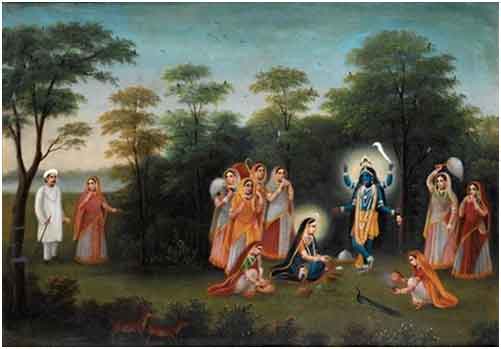
(Kali Krishna painting Dutch Bengal School, 19th century)
4. ‘Syncretism and plurality’ is how Bengal has become quintessentially Bengal, while absorbing the successive waves of influences from various religions, peoples and cultures.
Cosmopolitan Kolkata always has been a city of myriad communities since her inception. Even now, only 62% of the residents are linguistically Bengali, while several other communities of various sizes – from India, Asia and the world – live and dream as Kolkatans.
Hindutva with its foundational ideology of ‘Hindu Brahmanical Supremacism’ and the imposition drive of ‘Hindi-Hindustani Culture’ cannot be more polar opposite to the ethos of secular cosmopolitanism of the city – and also that of the state, in a relative sense – that is emphasized in a viral social media meme that says: ‘It’s only in Kolkata that Hindus stand in a long queue to buy cakes from a Jewish bakery made by Muslim bakers to celebrate a Christmas festival.’
5. ‘Renaissance’ – that set the socio-cultural consciousness of Bengal – cannot perhaps be repeated. World history hasn’t witnessed two or more renaissances from the same region. In the present Bengal, one can also argue that the ‘renaissance mindset’ of revival, rebirth and discoveries has given away to over-excessive nostalgia and sentimental beatification of the past. Bengal now lives more under the shadow, rather than the light of Renaissance. Re-focusing back on the values, impulses and wisdom of Renaissance – whose churned nectar is truly timeless – might be a better and more fruitful exercise, than the ennui-laden indulgence in shallow veneration.
Hindutva – since 1925 – has witnessed dogged persistence, gradual consolidation and rapid growth in the recent times, but not a renaissance.
6. ‘Resistance, anti-colonialism and anti-imperialism’ are the gifts of the freedom struggle and the Left ideology. Even after the defeat of the ‘CPM’ after 34 years, when U.S Secretary of State Hillary Clinton came to Kolkata to meet the new Chief Minister Mamata Banerjee in 2012, the American establishment also got a rather tepid response from the AITC / TMC government of West Bengal. No specific allegiance or alliance was formed with the U.S. administration; not even an official briefing was provided on what transpired during the hour long meeting at the Writers’ Building, which clearly indicated its subsequent inconsequentiality.
For over four decades Bengal has been opposing the central government – except for four years during 2004-2008, when the Left government was allied with the United Progressive Alliance (UPA) led by the Congress.
Bengal now has become a field of active resistance against the present Hindutva regime at the centre that has clearly overturned the traditional ‘non-aligned, anti-colonial and anti-imperial’ history of India, who used to be a beacon of the Global South, and has shifted towards the Axis of Empire in terms of foreign policy and socio-economic blueprint.
The Hindutva regime at the centre is increasingly placing India under the hole-ridden umbrella of the Western hegemon’s interests, narratives and worldview, without any civil society conversations or larger public debates, about the likely consequences of doing so.
M.S. Golwalkar – the RSS Chief and its apex ideologue from 1940 to 1973 – asked the Hindus, ‘Don’t waste your energy fighting the British, save your energy to fight our internal enemies that are Muslims, Christians and Communists.’
Nothing much has evolved in the ‘hierarchy and power’ driven right-wing mentality since then. Hindutva – with no history of anti-colonial, anti-imperial and freedom struggle – is doing the same even now. They are manufacturing ‘internal enemies’ and going after fellow Indian citizens, while indulging in the appeasement of the Empire, its corporations and its foot soldiers: the globe-trotting ‘philanthropic’ billionaires – unelected and unaccountable – who are poking their unwelcome noses into everything in India right now: from health to agriculture, from education to retail.
The sovereignty of India – to decide upon her own policies – is being eroded, while she is being brought under the ambit of the Neoliberal World Order in terms of socio-economic blueprint; and her resources and her market, is once again up for grabs.
While geopolitically, India is being pushed within the unilateral – but fast expiring – ‘rules-based’ imperial order, which expressively wishes to derail the New Silk Road (BRI), the Asian Century and the Eurasian integration project led by Russia, China and other sovereign nations of the East.
Ironically, the so-called ‘nationalist’ regime at the centre – while forgetting all the colonial history of 200 years of humiliation – is submissively accepting – and facilitating – the 21st century neo-colonial intrusion; and even accelerating the mindless historical blunder, to place India as a junior vassal of the declining Empire.
Can there be a greater shame, or a betrayal, than this? The price India and her people will have to pay for this, is likely to be terrifying, immense and catastrophic.

(Communist Party of India-Marxist leader Jyoti Basu, the second longest serving Chief Minister – 23 years 137 days – of any Indian State, with Fidel Castro in Kolkata in 1973)
7. ‘Revolution’ did occur in terms of the Left-initiated rural land reforms in Bengal, which has been a spirited cradle of revolutionaries since the freedom movement. The instinct remains in the air, even though the revolutionary goals are not clearly defined anymore, and have become acts of various resistances.
The civil society in Kolkata – led by the students – did a massive apolitical march of protest against the TMC Government in 2014 that led to an appreciable change in state-attitude, inspired sensitivity and relatively speaking, better governance.
Similarly Bengal witnessed protests and resistance to all the excesses of the central regime and the proposed policies like the CAA / NPR / NRC – along with detention centers – that threaten to unleash unprecedented societal chaos in Bengal with its history of refugee crisis stemming from the Partition and the consequences of 1971.
Now in 2021, the sense of resistance has quietly grown, but it’s not the time for a revolution. The mood is different. It is the time to stop the charge of Hindutva from crossing the moats and breaching the high walls.
The rising tide of Hindutva has also led to the re-emergence of 19th century Bengali nationalism / sub-nationalism.
Bangla Pokkho, a growing pro-Bengali organization, based upon the linguistic line, firmly rallies against ‘the Hindi and Urdu cultural and linguistic imposition and imperialism’.
This has happened as a defense mechanism against the oppressive force of Hindutva that is re-configuring ‘Bengaliness’ and ‘socially engineering’ the native populace in accepting new ‘cow belt’ cultural criterion that is alien to Bengal.
Such as the boisterous Ram Navami celebratory marches, with lethal weapons of metal and words, in terms of politicized sloganeering, with razor sharp communal edges.
Hindutva is not a ‘revolutionary force’ that wants to liberate and set people free from the clutches of oppressive power. It is more like a ‘colonial force’, that wants to re-create people and the land in its own image, while subjugating and suppressing – with all means – those who are not like them, and cannot be converted.
This also explains the latent affinity of Hindutva, with the ideology of the Empire, and its colonial ‘divide-and-rule’ tactics, and other psychological warfare, which are employed to keep the troubled populace distracted in a polarized atmosphere, surreptitiously grab / control all available resources and keep extracting maximum wealth, while using the tyrant’s combination of fear, theatre, circus and the jackboot.
8. ‘Socialism’ is the final aspect of the Bengaltattva. Like it was mentioned before in first part of the essay, it has become the default mode of Bengal politics. Even after the departure of the Left, the socio-economic policies of the AITC/TMC Government are also welfare oriented and socially conscious.
While the central governments – especially the current Hindutva regime – have unleashed the most hardcore in-equality enhancing neoliberal policies imported from the Axis of the Empire: wholesale privatization, over-concentration of capital and resources in fewer hands / rampant crony capitalism / strengthening of oligarchy, austerity (reduction of spending in health, education, welfare and removal of subsidies), growing imbalance in public expenditure, deliberate weakening and the ‘garage sale’ of public sector enterprises, excessive technocracy: digitalization-surveillance-data-harvesting, over-centralisation / de-democratisation / weakening of state federalism, opacity in government functioning, total control of democratic institutions, over-taxation, immiseration of MSMEs brought about by the cashless experiment of demonetization, over-complicated GST and sudden unplanned lockdown that created moving scenes – of scores of people walking on the roads, to reach faraway destinations – which rekindled the images from the Partition.
The present central regime – even though the RSS used to have a ‘socialist-looking’ economic outlook – is aligned completely with the neoliberal ‘pro-corporate, pro-technocracy and pro-oligarchy’ think-tank-land ideas, rooted from the decades-old ‘Washington Consensus’ and its virulent mutations.
Since the time of demonetization, India has witnessed five successive years of reducing growth, unprecedented job losses, reduction in per capita income, rising poverty-hunger-child-malnutrition, escalating NPAs and national debt, downgraded status of ‘democracy’, abject decline in press freedom, steady fall in Human Development Indices, drop in other indices linked to peace-happiness-gender-healthcare-environment and the terrifying crash from being the fifth fastest growing economy in the world in 2014, to the present 164th position.
Yet, the Hindutva regime – instead of serious soul-searching – cunningly exploited the cover of the pandemic to controversially force the IMF-approved colonial-style neoliberal farm laws, down the throat of the people.
This has sparked historic defiance – the ongoing Farmers’ Protest. But there is no sign of any course correction in the thinking – or its absence – of the government, who is still determined to keep following the same course of action which has caused so much chaos, misery and damage to the lives and the livelihoods of the people of India. Such a behavior is inexplicable, irrational, and even sociopathic.
The best way to predict the future behavior of a person or a regime is to look at the friends, the associates and the past actions.
By doing so, can safely predict, if a branch of the ‘Hindutva-IMF-Oligarchy’ coterie comes to power in Bengal, then the wealth extraction of the 6th largest state economy of India, that used to happen with manual shovels – under the Congress, the Left and the TMC – will start to happen with GPS-guided mechanized excavators on an industrial scale.
More significantly, the federal protection of having pro-people socialist state policies and welfare programs – in a milieu of an economic meltdown caused by deranged neoliberal-crack addicts – will vanish into oblivion; and the disappearance will happen faster, than one can say ‘Jai Baba Felunath’, or even, ‘Jai Bangla’.
*
Hindutva is an anti-thesis to Bengaltattva; a polar opposite. It threatens to weaken, erode and obliterate most of the aspects of Bengaltattva which have taken over a thousand years to develop.
Many in Bengal is looking at Hindutva as an invasive species: a non-native organism that adversely alters the local habitat, destroys the environment and causes widespread damage, while it ‘takes over’ the land.
Bengal’s unconscious mind still carries the trauma of being attacked, invaded, oppressed, looted and divided by the raiders and the colonialists from the West, since the middle of the 18th century till India’s Independence in 1947, for which Bengal fought so courageously and made immense sacrifices.
The arrival of the Hindutva forces at the gates – with boisterous chants and war drums – is rekindling the latent fears which were buried deeply in Bengal’s psyche.
Many people are looking at the Hindutva influx as another historical raid, commensurate to the bargis; and even as the neoteric landing of the neo-colonizers, the ‘West India Company’, comparable to the East India Company.
But going by the fundamental disparity between Bengaltattva and Hindutva, how did the BJP manage to forge a path in Bengal?
How did the Sangh Parivar become a serious contender in a state that has never elected a right wing government in its history?
How did the unthinkable happen? How did the people suddenly forget who they are?
How did this shift take place? What really happened in the recent years?
More pertinently, and with far-reaching consequences, what is likely to happen on 2 May 2021 when the results of the Bengal Assembly Elections are declared? And even then, what will transpire, further down in time?
****
(To be continued: Part Three: Bengal 2021 and Thereafter)
(The author gives permission to any publication that wishes to re-publish / translate this essay or any part of it. However, the original online publisher has to be mentioned, and a link to this essay has to be provided)
Devdan Chaudhuri is the author of the novel ‘Anatomy of Life’ published by Picador India. He writes short stories, opinion pieces and essays on politics and culture which have appeared in various publications. Apart from fiction and non-fiction, he also writes poetry. His poems have featured in ‘Modern English Poetry by Younger Indians’ published by Sahitya Akademi, India’s National Academy of Letters. He is also one of the contributing editors of The Punch Magazine: India’s monthly online magazine of Art, Culture and Literature. He lives in Kolkata.
GET COUNTERCURRENTS DAILY NEWSLETTER STRAIGHT TO YOUR INBOX

